
News Directory
- 1. Introduction to Stud Type Track Roller Bearings
- 2. Types of Stud Type Track Roller Bearings
- 3. Key Components and Materials
- 4. Factors to Consider When Selecting a Stud Type Track Roller Bearing
- 5. Applications of Stud Type Track Roller Bearings
- 6. Installation and Maintenance
- 7. Common Problems and Troubleshooting
- 8. Innovations and Future Trends
- Conclusion
Everything you need to know about stud type track roller bearings, explained?
1. Introduction to Stud Type Track Roller Bearings
1.1 What are Stud Type Track Roller Bearings?
A stud type track roller bearing, also known as a cam follower, is a specialized type of rolling-element bearing designed to follow a track or cam. Its primary function is to handle high radial loads while minimizing friction in linear motion and cam-controlled applications. The design is compact and highly integrated, making it a self-contained unit ready for installation.
The key components of a stud type track roller bearing are:
- Stud (Pin): This is the central, threaded shaft that serves as the inner race and allows the bearing to be mounted directly to a machine component. It typically has a screwdriver slot or hexagonal socket on one end for installation and a lubrication hole for maintenance.
- Outer Ring: The thick outer ring acts as the rolling surface that makes contact with the track or cam. It's designed to withstand heavy loads and impacts.
- Needle Rollers or Rollers: These are the rolling elements positioned between the stud and the outer ring. Needle rollers are long, thin cylinders that provide high load capacity within a small space. Some larger versions of these bearings may use standard cylindrical rollers.
- Seals: Many stud type track rollers come with integrated seals to protect the internal components from contamination and to retain lubricant.
- Cage (optional): A cage is sometimes used to separate and guide the rolling elements, which is beneficial for high-speed applications. Bearings without a cage are called "full complement" bearings and are designed for maximum load capacity.
1.2 Why Use Stud Type Track Rollers?
Stud type track rollers offer several key advantages over other bearing types, which is why they excel in specific applications.
- High Load Capacity: Their robust outer ring and high number of rolling elements (especially in full complement designs) allow them to handle significant radial loads and shock loads effectively.
- Simple Mounting: The integrated stud simplifies installation, as it can be mounted directly into a threaded hole without requiring a separate shaft or complex housing. This saves time and cost during assembly.
- Versatility: They are available in various designs, including different outer ring profiles and sealing options, to suit a wide range of application requirements.
- Durability: The thick-walled outer ring is specifically designed to resist deformation and wear from repeated contact with tracks and cams.
They are particularly effective in applications where continuous, heavy-duty operation is required, such as linear guides in manufacturing, conveyor systems, and various types of automated machinery.
| Feature | Stud Type Track Roller Bearing | Standard Ball Bearing |
| Primary Function | Following a track or cam; handling high radial loads | Supporting rotating shafts; handling both radial and axial loads |
| Outer Ring | Thick-walled, designed for direct contact with a track or cam | Thin-walled, requires an outer housing for support |
| Mounting | Integrated stud for simple, direct mounting | Requires a separate shaft and housing for installation |
| Load Capacity | Excellent for heavy radial and shock loads | Better for high speeds and combined loads (radial and axial) |
1.3 Brief History and Evolution
The concept of using rolling elements to reduce friction dates back centuries, but modern precision bearings, including track rollers, became widespread with the industrial revolution. The development of stud type track rollers was a response to the need for a compact, durable, and easily mountable bearing solution for cam mechanisms and linear motion guides in automated machinery. Over time, advancements in material science, manufacturing techniques, and sealing technology have led to more precise, longer-lasting, and more specialized track rollers. Modern track rollers often feature advanced seals, corrosion-resistant materials, and even integrated lubrication reservoirs, making them more reliable and requiring less maintenance than their predecessors.
2. Types of Stud Type Track Roller Bearings
2.1 Based on Outer Ring Shape
The outer ring profile is a critical feature that influences a stud type track roller bearing's performance and application. The two most common types are cylindrical and crowned.
Cylindrical (Flat) Outer Ring
Cylindrical outer rings are straight and flat, providing a larger contact area with the running track.
- High Load Capacity: Due to the wide contact surface, these bearings are excellent at handling very high radial loads.
- Track Alignment: They require precise alignment between the bearing and the track. Any misalignment can lead to edge loading, which concentrates stress and can cause premature wear or failure.
- Application: Ideal for applications where the track is rigid and the alignment is consistently maintained, such as in linear guide systems and machine ways.
Crowned Outer Ring
A crowned outer ring has a slightly curved profile. This design is specifically engineered to compensate for misalignment.
- Tolerance for Misalignment: The crowned shape distributes the load evenly across the outer ring even if there is slight misalignment between the bearing and the track, preventing edge stress.
- Lower Contact Stress: The point of contact is smaller than with a cylindrical outer ring, which can lead to higher contact stress under identical loads. However, the ability to handle misalignment often outweighs this.
- Application: Widely used in cam mechanisms, conveyor systems, and other applications where some track deflection or mounting inaccuracies are unavoidable.
| Feature | Cylindrical Outer Ring | Crowned Outer Ring |
| Contact Area | Larger and uniform | Smaller, with a central point of contact |
| Misalignment Tolerance | Low tolerance; prone to edge loading | High tolerance; load is distributed more evenly |
| Ideal Application | Precision linear guides and rigid tracks | Cam mechanisms and flexible tracks |
2.2 Based on Internal Construction
The type of rolling elements and whether they are guided by a cage determines the bearing's performance characteristics, particularly its speed and load capacity.
Full Complement Bearings
These bearings contain the maximum possible number of rolling elements, filling the space between the stud and outer ring. They do not have a cage.
- Maximum Load Capacity: Without a cage, more rollers can be fitted into the bearing, providing an exceptionally high static and dynamic load rating.
- Lower Speed Rating: The rollers make direct contact with each other, which generates friction and limits the bearing's maximum rotational speed.
- Application: Best suited for low-speed, high-load applications where the primary concern is carrying heavy weight, such as in heavy machinery and lift systems.
Caged Bearings
Caged bearings use a separator (cage) to hold and guide the rolling elements.
- High-Speed Capability: The cage prevents roller-to-roller friction, allowing for smoother operation at higher speeds and lower operating temperatures.
- Reduced Load Capacity: The presence of the cage means fewer rolling elements can be used, which slightly reduces the overall load capacity compared to full complement designs.
- Application: Preferred for high-speed, intermittent, or continuous motion applications, like automated assembly lines and printing presses.
2.3 Variations and Special Designs
To meet specific application demands, track roller bearings are available with a variety of specialized features.
Bearings with Seals
Many stud type track rollers come with integrated seals, which are essential for protecting the internal components from dust, dirt, and moisture. Seals also help to retain the lubricant within the bearing, extending its service life. Common seal types include contact seals (like rubber or plastic lips) and non-contact shields (like labyrinth seals).
Bearings with Eccentric Collars
Some track roller bearings are equipped with an eccentric collar, a feature that allows for fine-tuning of the radial position of the stud. This is particularly useful in linear guide systems where precise clearance or preload adjustment is required for optimal performance and to eliminate backlash.
3. Key Components and Materials
Stud type track roller bearings, often referred to as cam followers, are critical mechanical components designed to handle a combination of rolling and shock loads. Their durability and performance are directly dependent on the quality and characteristics of their constituent parts.
3.1 Stud (Pin)
The stud is the central, non-rotating shaft of the bearing. It is a critical component as it provides the mounting point and must withstand significant bending and shear forces.
- Material Selection: The most common materials are carbon steel and stainless steel. Carbon steel, often heat-treated for hardness, provides excellent strength and durability for most industrial applications. Stainless steel is chosen for its superior corrosion resistance, making it an ideal choice for food processing, marine, or chemical environments.
- Manufacturing Processes: Studs are typically machined from bar stock and undergo heat treatment to achieve the required hardness and wear resistance. Surface treatments such as black oxide or zinc plating can be applied to further enhance their corrosion resistance.
3.2 Outer Ring
The outer ring is the component that rolls directly on the track or cam. Its shape and material are crucial for the bearing's load distribution and service life.
- Material Selection: Outer rings are typically made from high-carbon, through-hardened steel or case-hardened steel. Through-hardened steel provides uniform hardness throughout the ring, offering high fatigue resistance. Case-hardened steel has a hard outer surface and a tougher, more ductile core, which helps it withstand shock loads without cracking.
- Outer Ring Profiles:
Cylindrical Outer Ring
This profile provides a larger contact area with the track, which is suitable for applications where the track is well-aligned and rigid. It offers a higher load capacity but is sensitive to misalignment.
Crowned Outer Ring
This profile has a slightly curved or spherical surface. This design is specifically engineered to compensate for minor misalignment between the bearing and the track, preventing edge stress and extending bearing life. It is the most common profile for general-purpose use.
3.3 Rolling Elements (Needle Rollers/Rollers)
These elements carry the load and facilitate the rolling motion. The type of rolling element determines the bearing's load capacity and speed capabilities.
- Material Selection: Rolling elements are almost always made from high-quality bearing steel (e.g., SAE 52100). This material is chosen for its high hardness, wear resistance, and fatigue strength.
- Precision and Surface Finish: The precision and surface finish of the rollers are vital for smooth operation and long bearing life. A high-quality finish reduces friction, heat generation, and noise.
3.4 Cages (where applicable)
A cage is an optional component that separates and guides the rolling elements, preventing them from rubbing against each other.
- Material Selection: Cages can be made from stamped steel for strength or plastic (e.g., polyamide) for high-speed, low-noise applications. Plastic cages are also lighter and offer good resistance to certain chemicals.
- Cage Design: The cage's design influences the roller guidance and lubrication distribution. A well-designed cage ensures proper roller spacing, reducing friction and extending the bearing's service life.
3.5 Seals and Lubrication
Proper sealing and lubrication are critical for protecting internal components from contaminants and reducing friction.
- Types of Seals:
Rubber Seals
These provide excellent protection against dust, dirt, and moisture. They are typically designated with a suffix like "RS" or "2RS."
Labyrinth Seals
These seals use a non-contact design with a series of grooves to prevent contaminants from entering the bearing. They are ideal for high-speed applications where friction from rubber seals would generate too much heat.
- Lubrication: Stud type track rollers are generally pre-lubricated with grease. Grease is preferred for its ability to stay in place and provide long-lasting lubrication in applications with frequent starts and stops or moderate speeds. For very high-speed or high-temperature applications, an oil-based lubricant may be used, but this is less common.
Comparison of Common Materials and Designs
| Component | Common Materials | Key Characteristics | Typical Applications |
|---|---|---|---|
| Stud | Carbon Steel, Stainless Steel | Strength, hardness, corrosion resistance | General machinery, food processing |
| Outer Ring | Through-Hardened Steel, Case-Hardened Steel | Fatigue resistance, shock load capacity | General industrial, high-impact environments |
| Rolling Elements | High-Carbon Bearing Steel | Hardness, wear resistance, fatigue strength | All stud type track roller bearings |
| Cage | Stamped Steel, Polyamide Plastic | Roller guidance, durability, weight, noise | Heavy-duty applications, high-speed applications |
| Seals | Rubber (RS), Labyrinth | Contamination protection, friction, speed | Contaminated environments, high-speed environments |
4. Factors to Consider When Selecting a Stud Type Track Roller Bearing
Proper selection of a stud type track roller bearing is crucial for ensuring optimal performance and maximum service life in a specific application. Several key factors must be carefully evaluated during the selection process.
4.1 Load Capacity
Load is one of the most important considerations when selecting a bearing. Understanding the different types of load capacity is essential for choosing the correct bearing.
-
Dynamic Load Capacity (C value)
This value represents the load a bearing can withstand under dynamic (motion) conditions. It is based on a calculation of the bearing's ability to achieve a specified service life (for example, 90% of bearings will reach 10^6 revolutions) under certain operating conditions. During selection, the bearing's dynamic load capacity must be greater than or equal to the actual operating load.
-
Static Load Capacity (C0 value)
This value represents the load a bearing can withstand under static or slow oscillating conditions, and is primarily related to the permanent deformation of the bearing's material. When selecting, the bearing's static load capacity must be greater than the maximum static or shock load that may occur.
4.2 Speed
The operating speed of the bearing is another critical factor. Exceeding the bearing's design speed limits can lead to overheating, lubrication failure, and premature damage.
-
Limiting Speed
The limiting speed is the maximum speed at which the bearing can operate safely. It is influenced by various factors, including the type of rolling elements, cage design, lubrication method, and seal type.
-
Influence of Lubrication on High-Speed Applications
In high-speed applications, selecting the appropriate lubricant and lubrication method is essential. Grease is typically suitable for moderate to low speeds, while oil lubrication is better for high-speed applications as it can dissipate heat more effectively.
4.3 Operating Temperature
Temperature has a direct impact on bearing performance and life. It is essential to ensure that the bearing can withstand the temperatures of its working environment.
-
Temperature Limits of Bearing Materials and Lubricants
Standard bearing steel and most greases have specific temperature limits. In high-temperature environments, special high-temperature steels and high-temperature-resistant greases or oils may be required.
-
Effect of Temperature on Bearing Life
High temperatures can accelerate the aging and failure of lubricants, thereby shortening the bearing's fatigue life. Effective heat dissipation is therefore key to maintaining a healthy bearing.
4.4 Environmental Conditions
The environment in which a bearing operates can significantly affect its performance and lifespan. Protecting the bearing from harsh environments is a crucial part of the design and selection process.
-
Corrosive Environments
In corrosive environments such as those with moisture, chemicals, or salt spray, priority should be given to bearings made of stainless steel or those with special anti-corrosion coatings. The choice of seals should also consider their chemical resistance.
-
Contamination
Dust, water, and debris are the main enemies of bearings. Selecting bearings with high-efficiency seals is the most effective way to prevent contamination from entering the bearing's interior.
4.5 Mounting and Space Constraints
The physical dimensions and mounting method of the bearing must be compatible with the overall design of the equipment.
-
Stud Dimensions and Tolerances
The diameter and length of the stud must precisely match the mounting hole. Tolerances that are too large or too small can lead to installation problems or premature bearing failure.
-
Overall Bearing Size
The outside diameter and width of the bearing must fit within the available space inside the equipment.
Overview of Key Selection Factors
| Factor | Impact | Key Considerations |
|---|---|---|
| Load Capacity | Bearing life and strength | Dynamic load, static load, shock load |
| Speed | Bearing operating temperature and lubrication | Limiting speed, lubrication method (grease/oil) |
| Operating Temperature | Material and lubricant performance | Operating temperature range, heat dissipation ability |
| Environmental Conditions | Bearing durability and protection | Corrosiveness, level of contamination, seal type |
| Mounting/Space | Bearing suitability and fit | Stud dimensions, outside diameter, mounting space |
5. Applications of Stud Type Track Roller Bearings
Due to their unique structure and high load capacity, stud type track roller bearings are widely used in a variety of industrial and mechanical applications that require precise guidance and the ability to withstand heavy loads. Here are some of the main application areas:
5.1 Industrial Automation
In the field of industrial automation, stud type track roller bearings are indispensable components, especially in systems that require precise motion control.
-
Cam Followers in Automated Machinery
As cam followers, these bearings are used to convert rotary motion into linear motion. They track the contours of cams in packaging machinery, printing presses, and assembly lines, ensuring smooth and precise movement.
-
Track Rollers in Conveyor Systems
In conveyor systems and material handling equipment, stud type track roller bearings are used as track rollers, helping heavy objects move smoothly and efficiently along tracks. They can withstand high loads and impacts while maintaining low friction.
5.2 Material Handling
In material handling equipment, the robustness and load capacity of stud type track roller bearings make them an ideal choice.
-
Applications in Forklifts and Other Material Handling Equipment
Stud type track roller bearings are used on the masts and carriages of forklifts to ensure smooth and precise movement when lifting and moving heavy loads. Their compact design and high radial load capacity are particularly valuable in such space-limited but high-load applications.
5.3 Automotive Industry
The automotive industry is another major application area for these bearings, where they play a role in several key components.
-
Applications in Engine Components and Steering Systems
In car engines, stud type track roller bearings can be used in the valve train and transmissions. In steering systems, they can ensure smooth, friction-free steering operation, thereby improving the driver's sense of control.
5.4 Other Industries
In addition to the main areas mentioned above, stud type track roller bearings play a key role in many other industries.
-
Textile Machinery
In textile machinery, these bearings are used in guiding and tensioning mechanisms to ensure the smooth movement of fabric during the production process.
-
Printing Presses
In printing presses, stud type track roller bearings are used in various rollers and mechanisms to achieve high-speed, high-precision paper feeding and printing.
Overview of Typical Applications for Stud Type Track Roller Bearings
| Application Area | Typical Equipment | Main Advantages |
|---|---|---|
| Industrial Automation | Packaging machinery, assembly lines, conveyors | Precise motion control, high load capacity, smooth operation |
| Material Handling | Forklifts, lifts, cranes | High radial load capacity, compact design, impact resistance |
| Automotive Industry | Engines, transmissions, steering systems | Efficient, smooth operation, high durability |
| Other Industries | Textile machinery, printing presses | High speed, high precision, reliability |
6. Installation and Maintenance
Proper installation and regular maintenance are crucial for maximizing the service life and performance of stud type track roller bearings. Following best practices can prevent premature failure and ensure reliable operation.
6.1 Proper Installation Techniques
Correct installation is the first and most important step to prevent damage and ensure proper function of the bearing.
-
Stud Mounting Methods
The stud is typically mounted into a housing bore. It is essential to use a mounting press or a soft-faced hammer to gently tap the stud into place. Never hammer directly on the stud's threads or outer ring, as this can cause permanent damage to the bearing's internal components and raceways.
-
Torque Specifications
Once the stud is in place, the nut should be tightened to the manufacturer's specified torque. Using a torque wrench is essential to prevent overtightening, which can lead to stud breakage or damage to the seating surface. Similarly, undertightening can cause the bearing to loosen during operation.
6.2 Lubrication
Lubrication reduces friction, dissipates heat, and protects the bearing from corrosion. Maintaining proper lubrication is a key part of routine maintenance.
-
Greasing Intervals and Methods
For bearings with a lubrication fitting, fresh grease should be applied at regular intervals specified by the manufacturer. The interval depends on factors such as operating speed, temperature, and environment. It is important to avoid over-greasing, which can lead to excessive heat generation and seal damage.
-
Selecting the Right Lubricant
Always use the type of grease or oil recommended by the bearing manufacturer. The wrong lubricant can fail to provide adequate film strength, leading to premature wear and failure.
6.3 Inspection and Monitoring
Regular inspection and condition monitoring can help detect potential problems before they lead to catastrophic failure.
-
Regular Checks for Wear and Damage
Visually inspect the outer ring and stud for signs of wear, pitting, or discoloration. Check the seals for any signs of damage or deterioration. A healthy bearing should rotate smoothly and quietly.
-
Vibration Analysis
In critical applications, using vibration analysis can provide early warning of bearing problems. An increase in vibration levels often indicates damage to the rolling elements or raceways, allowing for a timely replacement.
Maintenance Checklist for Stud Type Track Rollers
| Task | Frequency | Purpose |
|---|---|---|
| Visual Inspection | Regularly | Check for physical damage and seal integrity |
| Lubrication | As per manufacturer's schedule | Reduce friction and prevent wear |
| Torque Check | After installation and periodically | Ensure proper seating and prevent loosening |
| Vibration Monitoring | As needed for critical applications | Early detection of internal damage |
7. Common Problems and Troubleshooting
Even with proper selection and installation, stud type track roller bearings can encounter issues. Recognizing these common problems and knowing how to troubleshoot them is key to preventing bearing failure and minimizing downtime.
7.1 Premature Wear
Premature wear is one of the most common signs of a problem and can be caused by a variety of factors.
-
Causes and Prevention
Common causes include inadequate lubrication, contamination, and excessive load. To prevent premature wear, ensure you follow the manufacturer's lubrication schedule, use the correct lubricant, and protect the bearing from contaminants with proper seals. Always select a bearing with a load capacity sufficient for the application's maximum load and shock loads.
7.2 Contamination
Contaminants like dust, dirt, and moisture are a primary cause of bearing damage, as they can cause corrosion and increase wear on the rolling elements and raceways.
-
Sealing Issues and Solutions
Contamination often results from a compromised or unsuitable seal. To prevent this, select a bearing with a seal type appropriate for the environment (e.g., rubber seals for dusty environments). Regularly inspect seals for damage and replace them if they show signs of wear or cracking.
7.3 Lubrication Failure
Lubrication is the lifeblood of a bearing. A lack of proper lubrication can lead to a rapid increase in friction and heat, causing catastrophic failure.
-
Signs and Remedies
Signs of lubrication failure include excessive heat, a grinding noise, and discoloration of the bearing components. The remedy is to adhere strictly to the lubrication schedule and use the correct type and amount of grease or oil. Avoid over-greasing, as this can also damage seals and generate heat.
7.4 Noise and Vibration
Unusual noise and vibration are often early indicators of a problem. Ignoring these signs can lead to more serious damage.
-
Identifying the Source and Addressing the Issue
Noise and vibration can be caused by a variety of factors, including improper installation, misalignment, contamination, or internal damage. Check the mounting torque, inspect the bearing for signs of damage, and ensure the track is free of debris. If the problem persists, the bearing may need to be replaced.
Common Troubleshooting Table
| Problem | Symptom | Possible Causes |
|---|---|---|
| Premature Wear | Rough rotation, pitting on outer ring | Inadequate lubrication, high load, contamination |
| Contamination | Seal damage, rust, gritty sound | Failed seals, poor environmental protection |
| Lubrication Failure | High temperature, grinding noise | Incorrect lubricant, over-greasing, neglected maintenance |
| Noise and Vibration | Humming or rumbling sound, shaking | Improper installation, damaged raceways, misalignment |
8. Innovations and Future Trends
The field of stud type track roller bearings is continuously evolving. Ongoing research and development are focused on improving performance, extending service life, and integrating new technologies to meet the demands of modern industrial applications.
8.1 Advancements in Materials
Innovations in materials are leading to bearings that are stronger, lighter, and more resistant to harsh operating conditions.
-
High-Performance Polymers
The use of advanced polymers in cages and seals is improving bearing performance by reducing weight, friction, and noise. These materials are also resistant to many chemicals and can operate at high temperatures.
-
Ceramic Bearings
Bearings with ceramic rolling elements are gaining traction for applications requiring extreme performance. Ceramics offer superior hardness, corrosion resistance, and a much lower density than steel, making them ideal for high-speed, high-temperature, and corrosive environments.
8.2 Smart Bearings
The integration of technology is transforming bearings from simple mechanical components into intelligent devices capable of proactive maintenance.
-
Integrated Sensors for Condition Monitoring
Future bearings may come with built-in sensors to monitor key parameters like temperature, vibration, and load. This data can be used to predict maintenance needs, allowing for scheduled replacements and preventing unexpected failures.
-
IoT Connectivity
With IoT (Internet of Things) connectivity, smart bearings can transmit real-time performance data to a central monitoring system. This allows for remote diagnostics, predictive maintenance strategies, and a significant reduction in downtime.
8.3 Customization and Application-Specific Designs
As industries become more specialized, there is an increasing demand for bearings that are not "one-size-fits-all."
-
Manufacturers are offering highly customized stud type track rollers tailored to specific application requirements, such as unique mounting configurations, special lubrication, or advanced sealing solutions for extremely harsh environments.
Summary of Future Trends
| Category | Innovation | Expected Impact |
|---|---|---|
| Materials | High-performance polymers, ceramics | Improved durability, reduced friction, resistance to extreme conditions |
| Smart Technology | Integrated sensors, IoT connectivity | Predictive maintenance, reduced downtime, enhanced reliability |
| Design | Customization | Optimized performance for specific applications, improved efficiency |
Conclusion
9.1 Recap of Key Considerations
The choice between cylindrical and crowned outer rings, as well as between full complement and caged needle rollers, is paramount. Cylindrical rings are ideal for flat tracks and high loads, while crowned rings excel at compensating for misalignment. The internal construction dictates the balance between load capacity and speed.
Selecting the right materials, from high-quality bearing steel to specialized seals, ensures the bearing can withstand the specific operational and environmental stresses of your application. Seals are crucial for preventing contamination and retaining lubricant, directly impacting the bearing’s lifespan.
Proper selection also hinges on understanding key performance parameters like Dynamic Load Capacity © and Static Load Capacity (C₀). The C value determines the bearing’s fatigue life under motion, while the C₀ value is critical for applications involving static or heavy shock loads.
9.2 The Future of Stud Type Track Roller Bearings
The future of stud type track roller bearings is marked by a dual focus on material innovation and smart technology integration. Advanced materials like high-performance polymers and ceramics will lead to lighter, more durable, and corrosion-resistant bearings.
Furthermore, the rise of the Industrial Internet of Things (IIoT) is transforming these traditional components into “smart bearings.” By integrating miniaturized sensors, they can monitor crucial parameters like temperature, vibration, and rotation speed in real-time. This data can be transmitted to a central control system for proactive maintenance, allowing for issues to be addressed before a failure occurs. This shift from reactive to predictive maintenance will significantly reduce downtime and improve overall operational efficiency.
For manufacturers and engineers, this means a new era of enhanced reliability and performance. As a precision non-standard bearing manufacturer, we are committed to embracing these advancements, providing not just components, but integrated solutions that meet the evolving demands of modern industry.
Stud Type Track Roller Bearing Selection: A Summary Table
| Factor | Cylindrical Outer Ring | Crowned Outer Ring | Caged Needle Rollers | Full Complement Rollers |
|---|---|---|---|---|
| Application | Flat track, parallel surfaces, high rigidity requirements. | Compensating for misalignment, reducing edge stress. | High-speed applications, lower friction. | Low-speed, high-load applications. |
| Load Capacity | High radial load capacity. | Excellent radial load capacity, mitigates edge loading. | Good load capacity, optimized for speed. | Highest load capacity. |
| Key Advantage | High precision, uniform load distribution. | Tolerant of installation errors, longer lifespan under misalignment. | High limiting speed, less heat generation. | Maximum load-carrying capacity in a compact design. |
| Consideration | Requires precise alignment. | Slightly lower load capacity than cylindrical types. | Lower load capacity than full complement types. | Lower limiting speed, higher friction. |



 English
English 中文简体
中文简体 عربى
عربى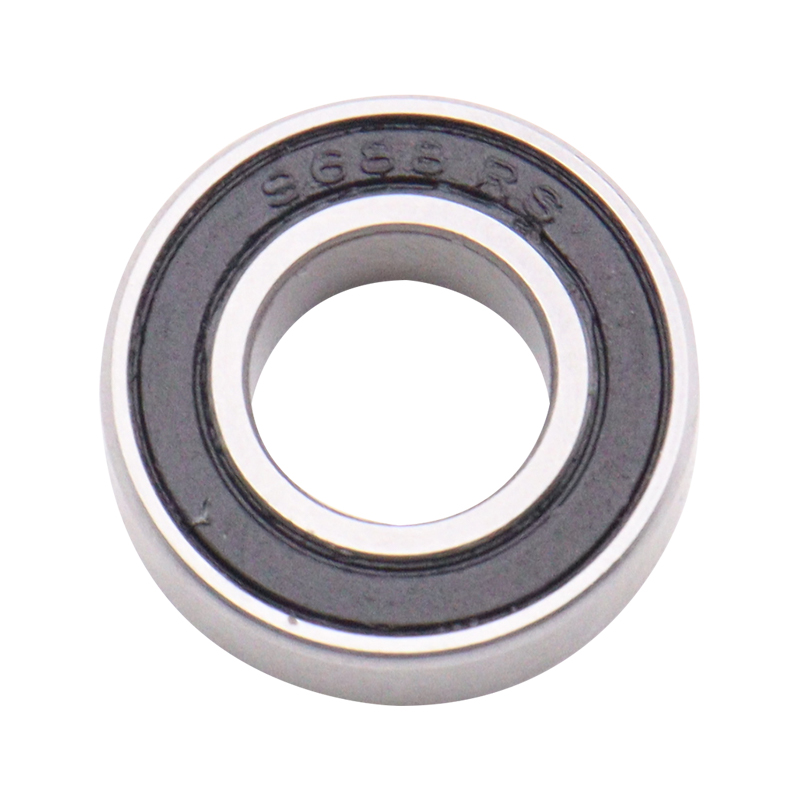
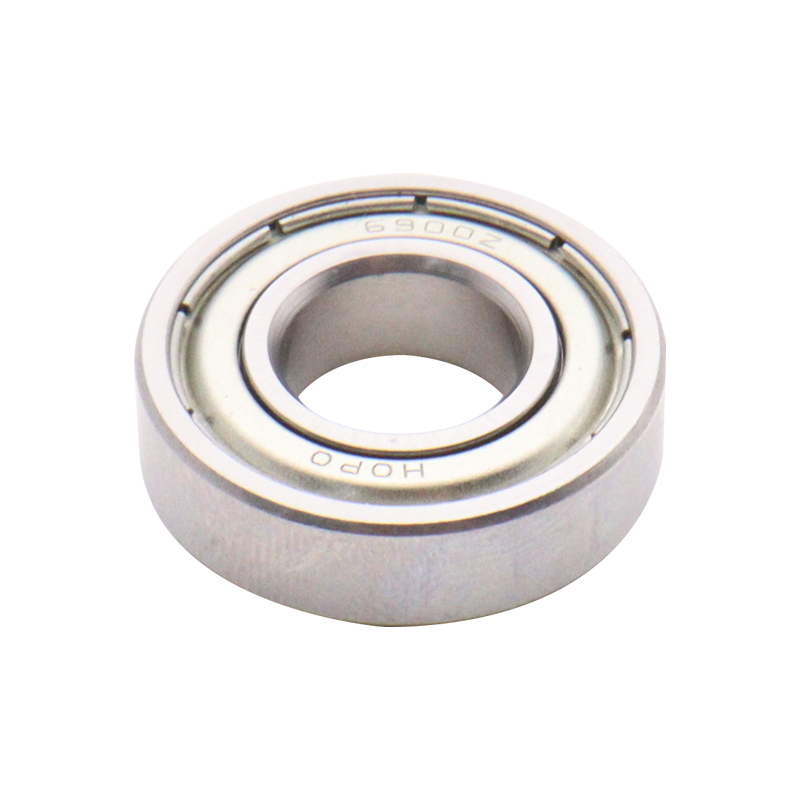
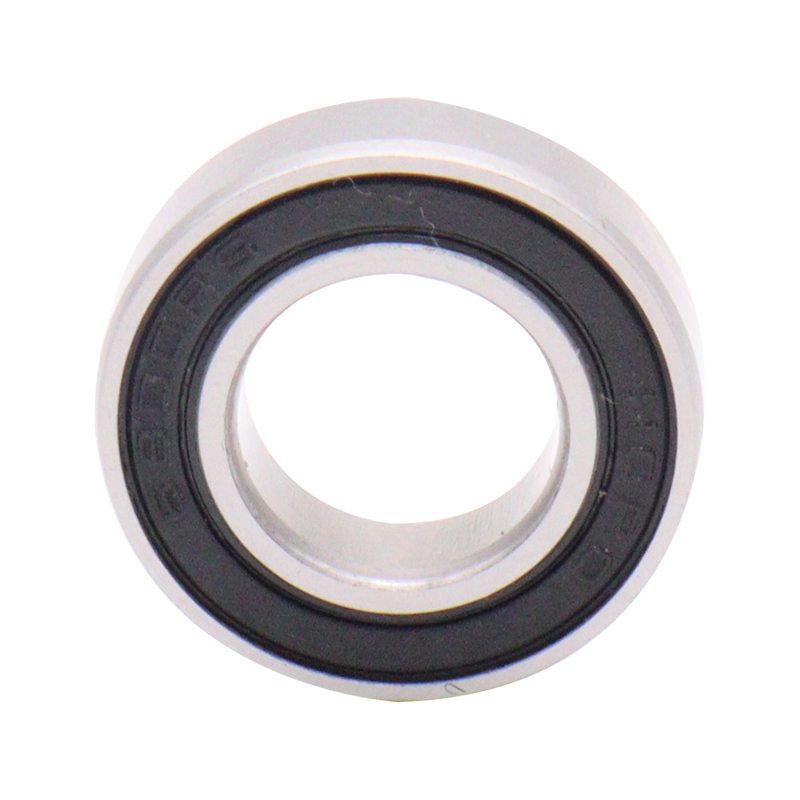
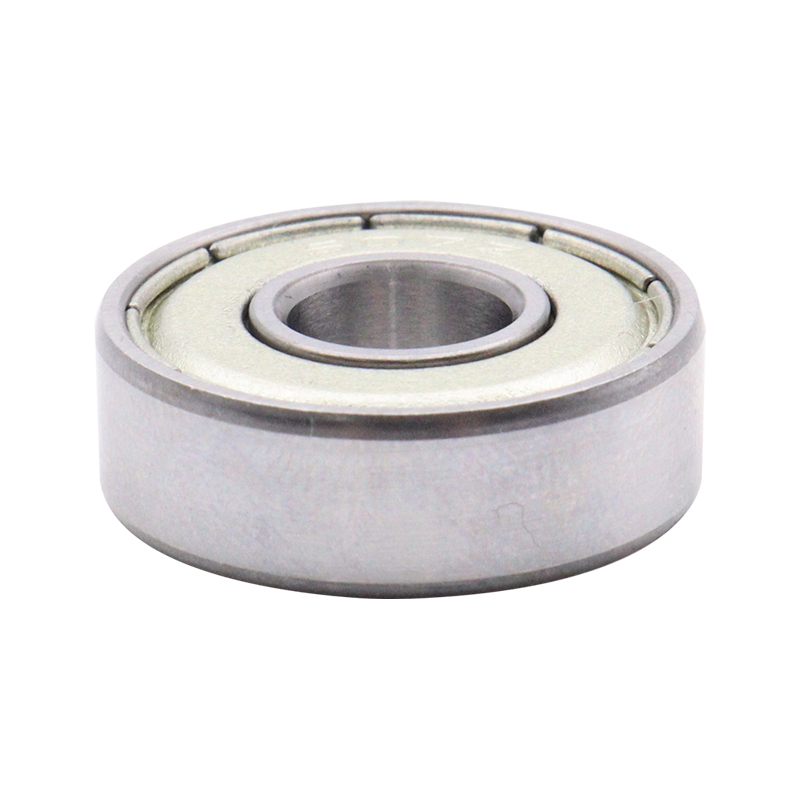
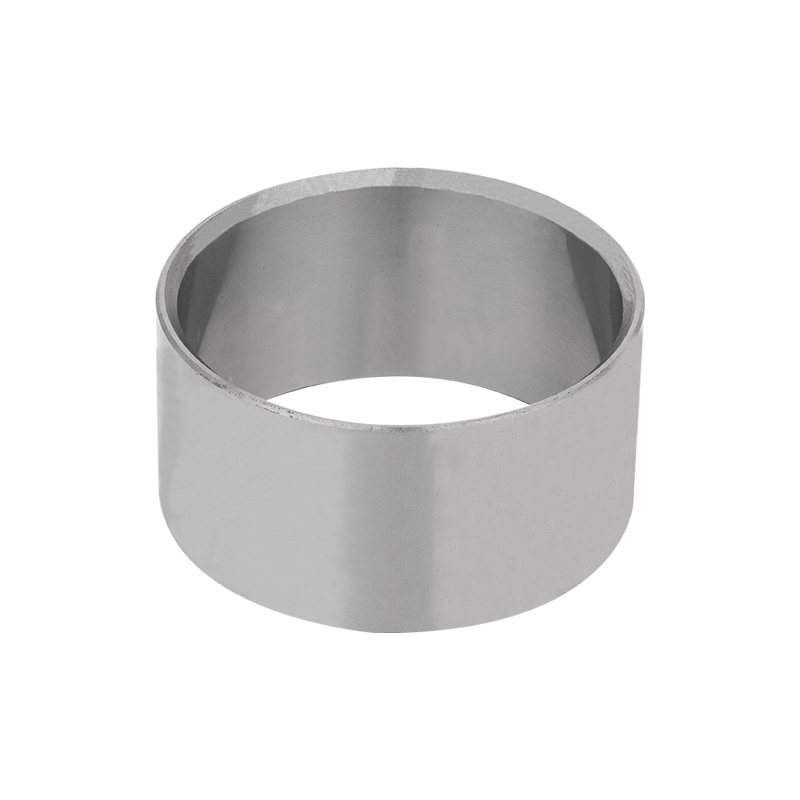
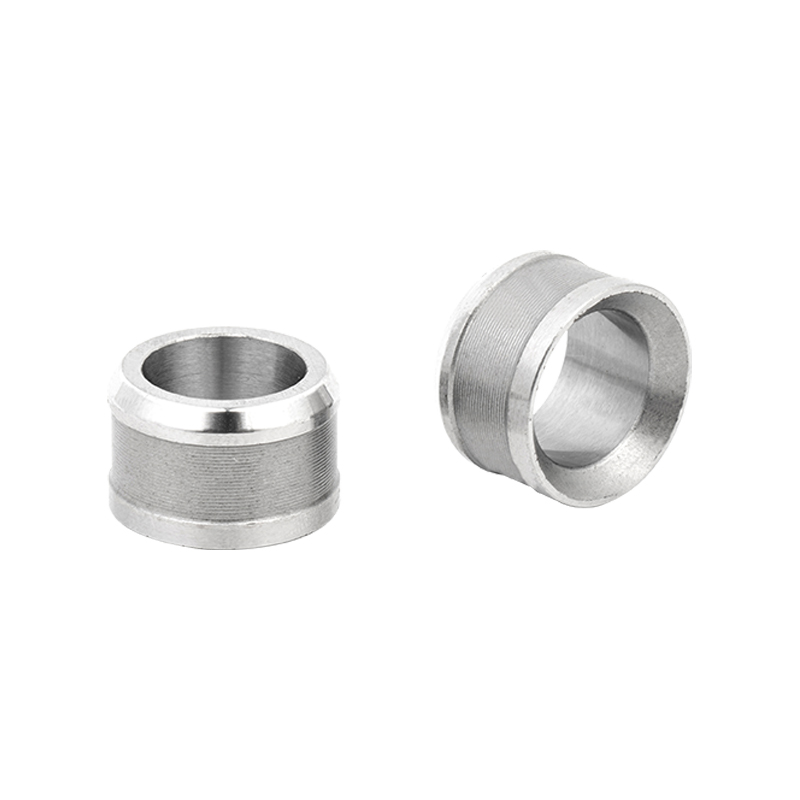
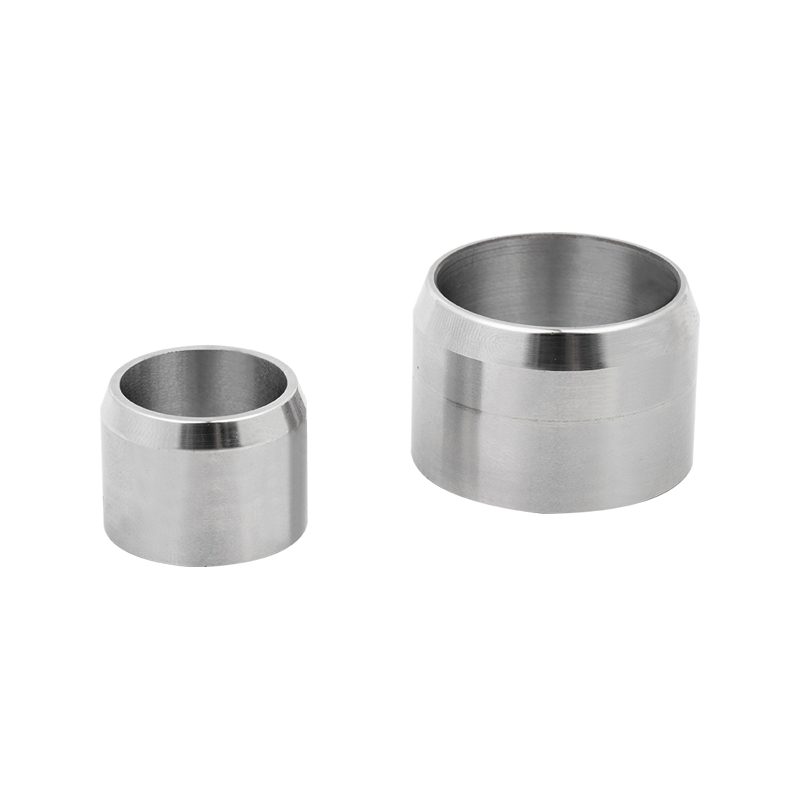
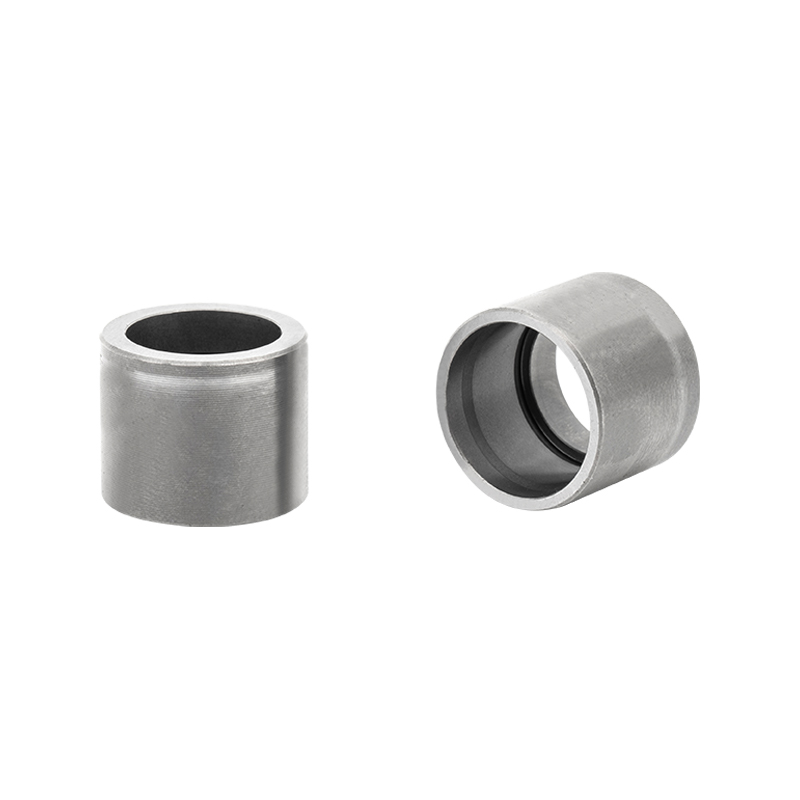
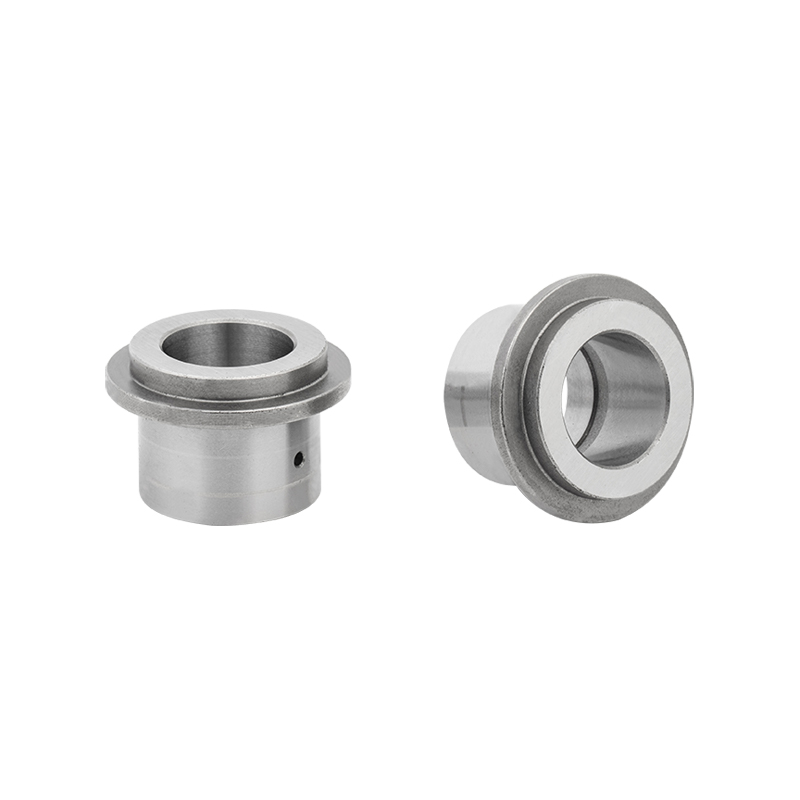

 Download Catalog
Download Catalog
